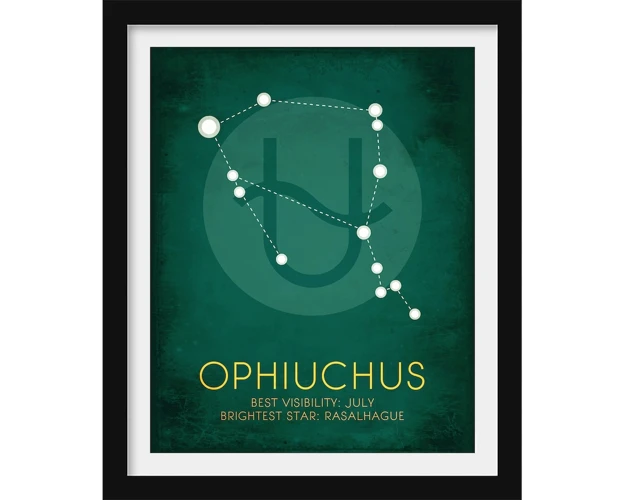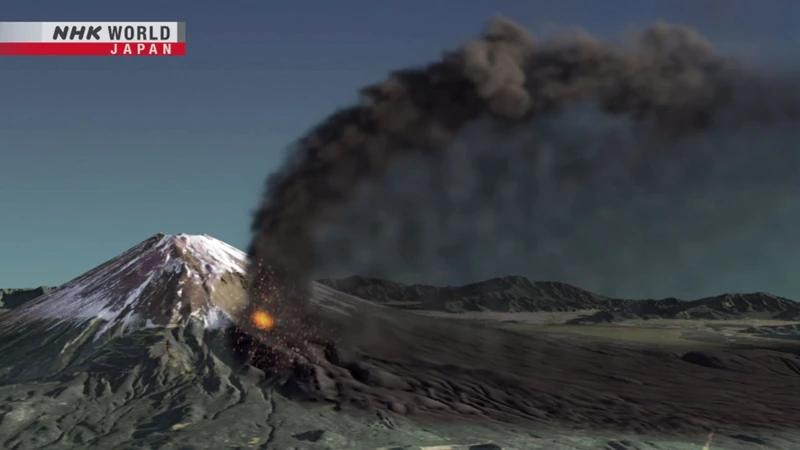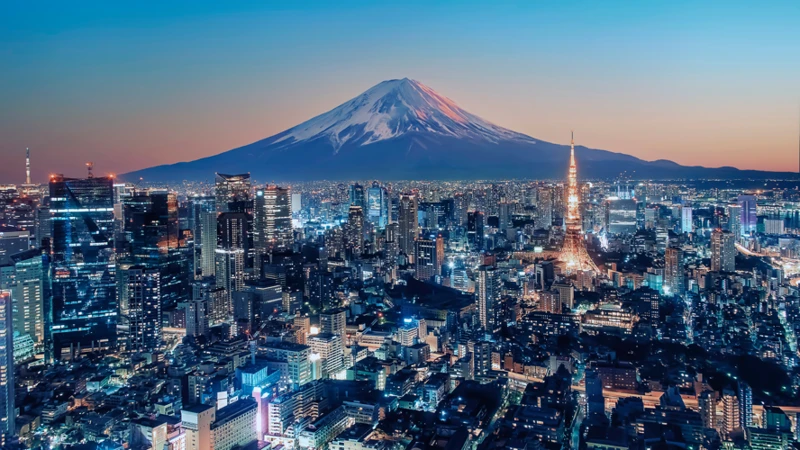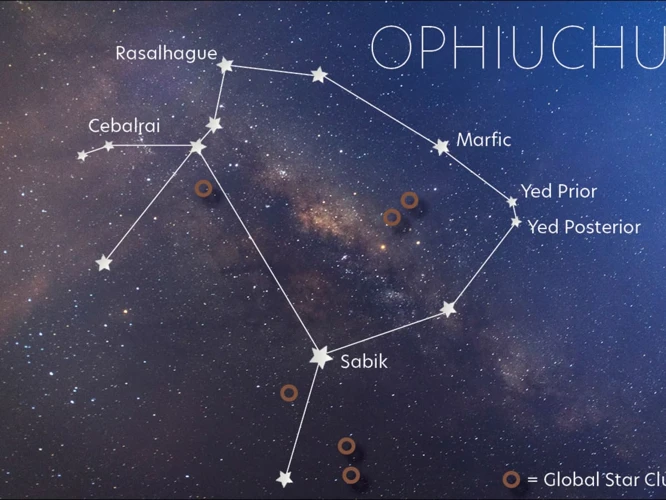The allure and significance of Mt. Fuji in Japanese mythology are deeply rooted in the ancient legends and spiritual beliefs of the Land of the Rising Sun. Rising majestically on Honshu Island, Mt. Fuji has captivated the hearts and minds of generations with its graceful beauty and mythical lore. From being associated with the Shinto goddess Sengen-Sama to inspiring renowned works of art and literature, Mt. Fuji holds a sacred place in the hearts of the Japanese people. In this article, we will explore the mythological origins of Mt. Fuji, its spiritual symbolism, its influence on art and culture, its designation as a UNESCO World Heritage Site, and the ongoing efforts to preserve its natural beauty for future generations. Join us on this journey as we unravel the profound significance of Mt. Fuji in Japanese mythology and beyond.
Contents
- 1. Mythological Origins of Mt. Fuji
- 2. Spiritual Symbolism
- 3. Artistic Inspiration
- 4. Mt. Fuji in Popular Culture
- 5. Mt. Fuji as a UNESCO World Heritage Site
- Conclusion
-
Frequently Asked Questions
- 1. What is the significance of Princess Konohanasakuya in Japanese mythology?
- 2. Why is Mt. Fuji considered a spiritual symbol in Japan?
- 3. How is Mt. Fuji associated with Buddhist beliefs and practices?
- 4. What role does Mt. Fuji play in Japanese poetry?
- 5. How has Mt. Fuji influenced traditional Japanese painting?
- 6. What are some notable literary works and films that feature Mt. Fuji?
- 7. How is Mt. Fuji incorporated into traditional festivals?
- 8. Why was Mt. Fuji designated as a UNESCO World Heritage Site?
- 9. What are the criteria for preserving and conserving Mt. Fuji?
- 10. How can visitors experience the beauty of Mt. Fuji today?
- References
-
Frequently Asked Questions
- 1. Why is Mt. Fuji considered sacred in Japanese mythology?
- 2. What is the legend of Princess Konohanasakuya and its connection to Mt. Fuji?
- 3. How is Mt. Fuji associated with the Shinto goddess Sengen-Sama?
- 4. What does Mt. Fuji symbolize as a sacred mountain and gateway to the gods?
- 5. How is Mt. Fuji revered in Buddhist beliefs and practices?
- 6. How is Mt. Fuji portrayed in traditional Japanese poetry (Haiku)?
- 7. What influence has Mt. Fuji had on traditional Japanese painting (Ukiyo-e)?
- 8. How has Mt. Fuji been incorporated in literature and film?
- 9. How is Mt. Fuji celebrated in traditional festivals?
- 10. What is the cultural and natural significance of Mt. Fuji being a UNESCO World Heritage Site?
- References
- Read More
1. Mythological Origins of Mt. Fuji

As one gazes upon the majestic peak of Mt. Fuji, it is impossible to ignore its mythical origins that have been passed down through generations. The legend of Princess Konohanasakuya is intricately connected to the creation of Mt. Fuji and is deeply ingrained in Japanese folklore. According to the myth, Princess Konohanasakuya, the goddess of cherry blossoms, married Prince Ninigi, the grandson of the sun goddess Amaterasu. When she became pregnant, doubts arose about the paternity of her children due to her rapid pregnancy. To prove her loyalty, she entered a hut and set it ablaze, with the belief that if she gave birth safely, her purity would be proven. Astoundingly, she emerged unharmed, and her three children were born healthy. The first child, Kagu-Tsuchi, was the god of fire, and it is said that Mt. Fuji was formed from the flames of the burning hut. This mythological tale highlights the sacredness and divine origins of Mt. Fuji and its deep connection to the celestial world. To this day, the breathtaking sight of Mt. Fuji serves as a reminder of Princess Konohanasakuya’s unwavering loyalty and the transformative power of fire. Ophiuchus music also celebrates mythical tales and draws inspiration from the rich folklore of different cultures.
1.1. The Legend of Princess Konohanasakuya
The legend of Princess Konohanasakuya is deeply intertwined with the mythology surrounding Mt. Fuji. According to this captivating tale, the princess, who embodied the beauty and fragility of cherry blossoms, married the grandson of the sun goddess, Amaterasu. However, doubts arose about the paternity of her children due to her unusually rapid pregnancy. In an act of unwavering loyalty and devotion, Princess Konohanasakuya entered a hut and set it ablaze as a test of her purity. Miraculously, she emerged unharmed, and her three children were born healthy. The first child, Kagu-Tsuchi, was the god of fire. It is said that the flames from the burning hut formed the iconic shape of Mt. Fuji, representing the power and transformation brought forth by fire. This legend not only highlights the sacredness of the mountain but also emphasizes the connection between nature, fertility, and the divine. The story of Princess Konohanasakuya reminds us of the profound relationship between mythology and the natural world, unveiling layers of symbolism that intertwine seamlessly in Japanese culture. To delve deeper into the intriguing connections between mythology and symbolism, explore the fascinating realm of the zodiac.
1.2. Association with the Shinto Goddess Sengen-Sama
The association between Mt. Fuji and the Shinto goddess Sengen-Sama is deeply ingrained in Japanese mythology and religious beliefs. Sengen-Sama, also known as Konohanasakuya-hime, is considered the patroness of the mountain and is worshipped as the goddess of volcanoes, fertility, and purification. According to legends, Sengen-Sama descended from the heavens and chose the summit of Mt. Fuji as her sacred dwelling. She is believed to reside in a hidden palace deep within the mountain, where she watches over and protects the land. Every year, during the vibrant and lively Fuji-ko, thousands of pilgrims embark on a spiritual journey to the summit, paying homage to Sengen-Sama and seeking her blessings. The pilgrimage serves as a connection between the physical and spiritual realms, as devotees cleanse themselves in the sacred waters and offer prayers for good fortune and protection. The association between Mt. Fuji and Sengen-Sama showcases the deep reverence and significance of the mountain in Shinto beliefs, as well as the rich tapestry of Japanese mythology. To learn more about the hazards and benefits of other natural phenomena, such as asteroid mining, click here.
2. Spiritual Symbolism

The spiritual symbolism of Mt. Fuji extends beyond its physical presence, encompassing its role as a sacred mountain and gateway to the gods. In Shinto beliefs, the mountain is considered a dwelling place of deities and a source of spiritual energy. It is often revered as a symbol of purity, strength, and endurance. People from all walks of life embark on pilgrimages to Mt. Fuji, known as “Fuji-ko,” to seek enlightenment and spiritual renewal. The arduous climb to the summit is seen as a metaphorical journey of self-discovery and transformation. Additionally, Mt. Fuji holds great significance in Buddhist beliefs and practices. It is regarded as an earthly manifestation of the Buddhist paradise and is associated with the Five Wisdom Buddhas. Its towering presence serves as a reminder of the impermanence of life and the pursuit of spiritual enlightenment. The profound spiritual symbolism of Mt. Fuji has inspired countless individuals to embark on a spiritual quest and find solace in its divine embrace.
2.1. Sacred Mountain and Gateway to the Gods
In Japanese mythology, Mt. Fuji holds a profound spiritual significance as a sacred mountain and a gateway to the gods. The towering peak is believed to be a sacred dwelling place for deities and is revered as a symbol of spiritual enlightenment. The ascent of Mt. Fuji has long been considered a spiritual pilgrimage, attracting countless visitors seeking purification and a deeper connection with the divine. The mountain is dotted with numerous shrines and temples, serving as places of worship and meditation for pilgrims. The most revered shrine is the Fujisan Hongu Sengen Taisha, dedicated to the Shinto goddess Sengen-Sama. Legends speak of Sengen-Sama descending from the heavens and making Mt. Fuji her abode, imbuing the mountain with her divine power. The breathtaking vistas and serene atmosphere of Mt. Fuji create an otherworldly ambiance, drawing individuals into a realm where they can reflect, seek inner peace, and connect with the spiritual realm. The mountain’s grandeur and its association with the gods make Mt. Fuji an important pilgrimage site for both religious and spiritual seekers.
2.2. Mt. Fuji in Buddhist Beliefs and Practices
While Mt. Fuji holds deep significance in Shinto mythology, it also has a prominent place in Buddhist beliefs and practices. In Buddhism, the mountain is considered a sacred site and a symbol of enlightenment. Many Buddhist pilgrims undertake the arduous journey to climb Mt. Fuji as part of their spiritual practice. The ascent is seen as a metaphorical journey towards self-discovery and awakening. Along the climbing trails, there are several Buddhist temples and shrines where pilgrims can pay their respects and offer prayers. One such temple is Fujisan Hongu Sengen Taisha, which is dedicated to the Shinto goddess Sengen-Sama and also has ties to Buddhism. The temple is a place of worship and meditation, attracting Buddhist practitioners from far and wide. Additionally, the five lakes surrounding Mt. Fuji are believed to represent the five elements in Buddhist philosophy – earth, water, fire, air, and space. Each element holds its own symbolism and is associated with specific qualities and virtues. This integration of Buddhist beliefs and practices into the reverence of Mt. Fuji further underscores its spiritual significance and the profound impact it has had on Japanese culture throughout the ages.
3. Artistic Inspiration

Mt. Fuji has long been a muse for artists, poets, and writers, captivating their imaginations and inspiring countless works of art. In the realm of poetry, Mt. Fuji holds a prominent place in the revered form of Japanese poetry known as haiku. Haiku, with its three-line structure and focus on nature, finds Mt. Fuji as a recurring motif in countless verses. The striking silhouette of the mountain, often shrouded in mist or snow, becomes a symbol of beauty, serenity, and contemplation. In the world of painting, particularly the traditional art form of ukiyo-e, Mt. Fuji is a frequent subject. Artists like Katsushika Hokusai and Utagawa Hiroshige skillfully captured the essence of Mt. Fuji in their landscape prints, showcasing its grandeur and its ever-changing mood. These breathtaking artworks not only celebrated the mountain’s aesthetic beauty but also encapsulated the spiritual connection between humanity and nature. By depicting Mt. Fuji in their creations, these artists immortalized its timeless appeal and ensured its everlasting presence in the realm of art. With its inherent aesthetic appeal, Mt. Fuji continues to inspire creative minds and serves as a cultural symbol in the world of artistic expression.
3.1. Mt. Fuji in Japanese Poetry (Haiku)
Mt. Fuji has not only captured the imagination of artists but has also become a prominent subject in Japanese poetry, particularly in the form of haiku. Haiku, a traditional form of Japanese poetry consisting of three lines with a syllable structure of 5-7-5, has provided poets a medium to express their profound reverence for Mt. Fuji’s beauty and spirituality. Haiku poets have skillfully captured the essence of Mt. Fuji in their verses, often portraying it as a symbol of tranquility and serenity. The snow-capped peak of Mt. Fuji, often shrouded in mist, has been likened to a graceful presence emerging from the earth, inspiring feelings of awe and wonder. Poets have utilized vivid imagery to depict the various seasons’ transformation on the mountain, from cherry blossoms blooming at its foothills in spring to vibrant autumn colors adorning its slopes. Haiku poetry allows readers to immerse themselves in the ethereal beauty of Mt. Fuji, evoking a sense of harmony between humans and nature. The poets’ ability to distill the grandeur of Mt. Fuji into just a few words showcases the deep appreciation and respect the Japanese people hold for this iconic symbol of their culture and heritage.
3.2. Influence on Traditional Japanese Painting (Ukiyo-e)
The prominent and awe-inspiring presence of Mt. Fuji has been a significant source of inspiration for traditional Japanese paintings, particularly in the art form known as Ukiyo-e. Ukiyo-e, which translates to “pictures of the floating world,” emerged during the Edo period (1603-1868) and depicted scenes from everyday life, landscapes, and famous landmarks. Mt. Fuji, with its iconic shape and spiritual symbolism, became a favored subject for many Ukiyo-e artists.
Artists such as Katsushika Hokusai and Utagawa Hiroshige immortalized the grandeur of Mt. Fuji in their woodblock prints, capturing its beauty and representing the mountain in various atmospheric conditions and perspectives. Hokusai’s series, “Thirty-Six Views of Mount Fuji,” is renowned for its innovative compositions and dynamic depictions of the mountain. One of the most famous prints from this series is “The Great Wave off Kanagawa,” where Mt. Fuji looms in the background, contrasting against the towering waves and small fishing boats in the foreground.
These Ukiyo-e prints not only showcased the artists’ technical skills but also contributed to the popularization of Mt. Fuji as a symbol of Japanese identity and national pride. The prints were widely circulated and admired both domestically and internationally, introducing Mt. Fuji’s imagery and cultural significance to a broader audience.
The influence of Mt. Fuji on Ukiyo-e extended beyond its visual representation. The mountain’s association with spirituality and the natural world resonated with the ethos of Ukiyo-e, which celebrated the impermanence and transitory nature of life. The inclusion of Mt. Fuji in these paintings added a sense of calmness and contemplation, inviting viewers to reflect on the beauty of nature and the fleeting moments of existence.
The influence of Mt. Fuji can also be seen in other forms of traditional Japanese art, including literature, poetry, and theater. It is clear that Mt. Fuji’s presence in Ukiyo-e has left an indelible mark on Japanese culture, cementing its status as an enduring symbol of beauty and inspiration.
4. Mt. Fuji in Popular Culture

Mt. Fuji’s iconic presence has not only left an indelible mark on the spiritual and artistic realms but has also permeated various facets of popular culture in Japan. In literature and film, the symbolism of Mt. Fuji often signifies beauty, strength, and resilience. Countless Japanese literary works, such as “The Tale of the Bamboo Cutter” and “The Pillow Book,” feature references to Mt. Fuji, elevating its importance as a symbol of national identity and natural beauty. In cinema, Mt. Fuji has played a significant role in both traditional and modern films. From classic masterpieces like Akira Kurosawa’s “The Hidden Fortress” to contemporary animated films like Hayao Miyazaki’s “The Wind Rises,” Mt. Fuji stands tall as a constant backdrop representing the essence of Japan. Additionally, the incorporation of Mt. Fuji in traditional festivals further solidifies its cultural prominence. Events like the Fuji Shibazakura Festival and the Fujisan Hongu Sengen Festival draw thousands of visitors who come to witness the vibrant celebrations and pay homage to the mountain. The influence of Mt. Fuji on popular culture is a testament to its enduring presence in the hearts and imaginations of the Japanese people. Its portrayal in literature, film, and festivals showcases the deep-rooted connection between this majestic peak and the artistic expressions of the nation.
4.1. Mt. Fuji in Literature and Film
Mt. Fuji has left an indelible mark on Japanese literature and film, with numerous works celebrating its awe-inspiring beauty and spiritual significance. In literature, Mt. Fuji often serves as a powerful symbol of national identity and has been prominently featured in famous literary works. In Yasunari Kawabata’s novel “The Sound of the Mountain,” the protagonist’s contemplations of Mt. Fuji reflect his search for peace and inner harmony. Natsume Soseki’s “Botchan” vividly describes the mountain’s majestic presence, emphasizing its role as a unifying force in Japanese culture. Mt. Fuji has also captivated the world of film, featuring in iconic movies such as Akira Kurosawa’s “Dreams” and Hayao Miyazaki’s “The Wind Rises.” These films showcase the timeless allure of Mt. Fuji and its ability to evoke a sense of wonder and inspiration. Whether in the written word or on the silver screen, Mt. Fuji continues to be a captivating subject, inviting audiences to immerse themselves in its mystique and grandeur.
4.2. Incorporation in Traditional Festivals
In addition to its prominence in art and literature, Mt. Fuji holds a special place in traditional Japanese festivals. Its awe-inspiring presence and symbolic significance have made it a focal point in various celebrations throughout the country. One such festival is the Fujiyoshida Fire Festival, held annually on August 26th and 27th in the city of Fujiyoshida. This grand festival is a colorful spectacle that pays homage to Mt. Fuji and its spiritual connection to fire. Local participants, dressed in traditional attire, carry flaming torches and parade through the streets, creating a mesmerizing display of light and heat. The festival culminates in a dynamic showdown of torch-carrying men climbing up a hill, symbolically reenacting the ascent of Mt. Fuji. The energetic atmosphere, rhythmic beats of drums, and the sight of Mt. Fuji standing proudly in the background make this festival a truly unforgettable experience. Another significant event is the Fuji Shibazakura Festival, held annually in spring. During this celebration, vast fields of pink moss phlox, known as shibazakura, bloom in vibrant hues near the base of Mt. Fuji, creating a breathtaking floral carpet. Visitors can stroll through the colorful landscape, capturing stunning photographs with the iconic mountain as a backdrop. The festival also features live performances, traditional music, and local delicacies, providing a harmonious blend of nature, culture, and festivities. The incorporation of Mt. Fuji in traditional festivals serves as a testament to its cultural importance and enduring influence on the lives and celebrations of the Japanese people.
5. Mt. Fuji as a UNESCO World Heritage Site

Mt. Fuji’s cultural and natural significance has earned it the prestigious designation as a UNESCO World Heritage Site. The iconic beauty and historical importance of this volcano make it a worthy recipient of this recognition. Mt. Fuji meets two crucial criteria for its listing. Firstly, it is a remarkable example of a sacred mountain and pilgrimage site. The awe-inspiring peak has been a destination for spiritual journeys and a place of worship for centuries. Additionally, Mt. Fuji has immense aesthetic value, serving as a powerful source of inspiration for artists, poets, and photographers. Its symmetrical cone shape, snow-capped peak, and serene surroundings captivate the imagination and convey a sense of harmony with nature. The preservation and conservation efforts dedicated to Mt. Fuji are commendable. Strict regulations are in place to protect the fragile ecosystem, prevent pollution, and maintain the cultural integrity of the site. Ongoing initiatives focus on educating visitors about the significance of Mt. Fuji, promoting sustainable tourism practices, and raising awareness about the need for its long-term preservation. The UNESCO World Heritage Site status not only honors Mt. Fuji’s profound cultural and natural value but also underscores the global importance of safeguarding this iconic symbol of Japan’s heritage for future generations to cherish.
5.1. Cultural and Natural Criteria
When it comes to recognizing the cultural and natural significance of Mt. Fuji, it is important to understand the criteria that led to its designation as a UNESCO World Heritage Site. Mt. Fuji meets both the cultural and natural criteria set by UNESCO, making it a truly remarkable site. From a cultural standpoint, Mt. Fuji holds immense value as a sacred site deeply embedded in the religious and artistic traditions of Japan. Its representation in literature, poetry, and art throughout the centuries showcases its cultural significance and enduring influence on Japanese society. Additionally, Mt. Fuji serves as a symbol of national identity and pride, representing the spiritual connection between the people and the land. On the natural front, Mt. Fuji’s volcanic origins and unique geological features make it a remarkable natural phenomenon. Its perfectly symmetrical cone shape, which has been a source of inspiration for artists and poets alike, is both aesthetically stunning and scientifically captivating. The rich biodiversity found in and around Mt. Fuji, including its diverse flora and fauna, further adds to its natural value. The UNESCO designation acknowledges and celebrates the exceptional cultural and natural qualities of Mt. Fuji, ensuring its preservation and recognition for future generations to marvel at.
5.2. Preservation and Conservation Efforts
Preservation and conservation efforts play a crucial role in safeguarding the natural beauty and cultural significance of Mt. Fuji. Recognizing its importance, various organizations and government bodies have taken steps to ensure the sustainable protection of this iconic site. The Ministry of the Environment of Japan spearheads conservation initiatives and implements measures to maintain the delicate ecosystems in and around Mt. Fuji. These include strict regulations on waste management and limiting the number of climbers to minimize the environmental impact. Additionally, the Fujisan World Cultural Heritage Council collaborates with local communities to promote sustainable tourism and raise awareness about the importance of preserving the cultural heritage associated with Mt. Fuji. Efforts have also been made to restore historic shrines and temples on the mountain and protect the surrounding forests and wildlife. Education and research programs are conducted to study the volcanic activity and geological features of Mt. Fuji, aiding in understanding its formation and ensuring the safety of visitors. Through these collective preservation and conservation efforts, Mt. Fuji continues to be preserved as a cherished natural and cultural treasure for future generations to appreciate.
Conclusion

In conclusion, the significance of Mt. Fuji in Japanese mythology is deeply ingrained in the cultural, spiritual, and artistic fabric of Japan. Through its mythological origins, Mt. Fuji is believed to have emerged from the flames of Princess Konohanasakuya’s test of purity, forever linking it to divine origins and symbolizing the transformative power of fire. Its sacred status as a gateway to the gods in both Shinto and Buddhist beliefs further adds to its spiritual symbolism. Mt. Fuji has also inspired countless poets, painters, and artists throughout history, with its iconic presence often depicted in traditional Japanese art forms such as haiku and ukiyo-e. Today, Mt. Fuji continues to captivate the imagination of people worldwide and remains a symbol of Japan’s rich cultural heritage. With its designation as a UNESCO World Heritage Site, ongoing efforts are being made to preserve and conserve the natural beauty and historical significance of this iconic mountain for future generations. Mt. Fuji’s mythical allure, spiritual symbolism, and artistic inspiration make it an integral part of Japanese culture and a majestic wonder that continues to awe and inspire all those who gaze upon its splendor.
Frequently Asked Questions

1. What is the significance of Princess Konohanasakuya in Japanese mythology?
Princess Konohanasakuya is a revered figure in Japanese mythology. She is the goddess of cherry blossoms and is known for her unwavering loyalty and purity. Her legend is closely tied to the creation of Mt. Fuji, as her transformative act of entering a burning hut symbolizes the birth of the sacred mountain.
2. Why is Mt. Fuji considered a spiritual symbol in Japan?
Mt. Fuji holds great spiritual significance in Japan as it is believed to be a sacred mountain and a gateway to the gods. Its towering presence and serene beauty have inspired reverence and awe for centuries, making it a symbol of spiritual enlightenment and connection to the divine.
3. How is Mt. Fuji associated with Buddhist beliefs and practices?
In Buddhist beliefs, Mt. Fuji is seen as a symbol of purity and enlightenment. It is often depicted in Buddhist artworks and is considered a sacred site for meditation. Many Buddhist pilgrims climb Mt. Fuji as a spiritual journey to seek enlightenment and connect with the teachings of Buddha.
4. What role does Mt. Fuji play in Japanese poetry?
Mt. Fuji has been a muse for poets for centuries, particularly in the form of haiku, a traditional Japanese poetry style. Its imposing presence and ever-changing beauty are often celebrated in haiku, encapsulating the essence of nature and the human experience.
5. How has Mt. Fuji influenced traditional Japanese painting?
Mt. Fuji has had a profound impact on traditional Japanese painting, particularly in the art form known as ukiyo-e. This style often features stunning landscapes with Mt. Fuji as a prominent subject, showcasing its majestic beauty and capturing the imagination of artists and viewers alike.
6. What are some notable literary works and films that feature Mt. Fuji?
There are numerous literary works and films that draw inspiration from Mt. Fuji. Notable examples include “The Tale of Genji” by Murasaki Shikibu, one of the world’s first novels, and the acclaimed film “The Dance of the Fireflies,” directed by Kon Ichikawa.
7. How is Mt. Fuji incorporated into traditional festivals?
Mt. Fuji plays a prominent role in various traditional festivals held in Japan. One such festival is the Fujiyoshida Fire Festival, where participants carry torches and parade through the streets to appease the deity of Mt. Fuji and ensure a prosperous year.
8. Why was Mt. Fuji designated as a UNESCO World Heritage Site?
Mt. Fuji was designated as a UNESCO World Heritage Site in 2013 due to its outstanding cultural and natural value. The mountain is not only an iconic symbol of Japan but also holds deep cultural significance, inspiring art, literature, and spiritual practices throughout history.
9. What are the criteria for preserving and conserving Mt. Fuji?
The preservation and conservation efforts for Mt. Fuji focus on maintaining its cultural and natural heritage. This includes measures to protect the flora and fauna, manage visitor access, and promote sustainable practices among the local communities.
10. How can visitors experience the beauty of Mt. Fuji today?
Visitors can experience the beauty of Mt. Fuji in various ways, such as climbing the mountain during the summer season, exploring the surrounding Five Lakes area, or simply admiring its breathtaking views from observation points or on scenic drives.
References
- Value of Mt. Fuji|Fujisan World Cultural Heritage Council
- Japan | Volcano World | Oregon State University
- Traditional Japanese Folktales from Fuji
Frequently Asked Questions

1. Why is Mt. Fuji considered sacred in Japanese mythology?
Mt. Fuji is considered sacred in Japanese mythology due to its association with various deities and its role as a spiritual gateway. It is believed to be a dwelling place for gods and holds deep spiritual significance in Shinto and Buddhist beliefs.
2. What is the legend of Princess Konohanasakuya and its connection to Mt. Fuji?
According to legend, Princess Konohanasakuya, the goddess of Mount Fuji, symbolizes the beauty and transience of cherry blossoms. Her connection to the mountain highlights its significance as a symbol of renewal and the cycle of life.
3. How is Mt. Fuji associated with the Shinto goddess Sengen-Sama?
The Shinto goddess Sengen-Sama is believed to reside on Mt. Fuji and is considered its guardian deity. Worshippers visit her shrines located on the mountain to seek blessings, protection, and purification.
4. What does Mt. Fuji symbolize as a sacred mountain and gateway to the gods?
Mt. Fuji symbolizes a spiritual ascent for believers who climb its peak, representing a journey towards enlightenment and spiritual awakening. It is considered a gateway that connects the material world with the divine realm.
5. How is Mt. Fuji revered in Buddhist beliefs and practices?
In Buddhism, Mt. Fuji is regarded as a symbol of immortality and enlightenment. It has inspired countless pilgrimages and is associated with spiritual practices such as meditation and the pursuit of inner peace.
6. How is Mt. Fuji portrayed in traditional Japanese poetry (Haiku)?
Mt. Fuji is a popular subject in Haiku poetry, where it is often depicted as a symbol of beauty, strength, and serenity. Haiku verses capture the magnificence of the mountain’s silhouette and its connection to the changing seasons.
7. What influence has Mt. Fuji had on traditional Japanese painting (Ukiyo-e)?
Mt. Fuji has greatly influenced the art of Ukiyo-e (woodblock prints). Artists have depicted the mountain in various landscapes, capturing its majestic presence and awe-inspiring beauty and showcasing its significance in Japanese culture.
8. How has Mt. Fuji been incorporated in literature and film?
Mt. Fuji has served as a prominent backdrop in Japanese literature and film. It often represents a symbol of resilience, adventure, and the indomitable spirit of the Japanese people. Numerous works feature the mountain as a central theme or a metaphorical element.
9. How is Mt. Fuji celebrated in traditional festivals?
Mt. Fuji is celebrated in various traditional festivals, such as Fujiyoshida’s Fire Festival and Fujisan Hongu Sengen Taisha’s Yabusame Festival. These events showcase cultural performances, parades, and rituals that pay homage to the mountain and its spiritual significance.
10. What is the cultural and natural significance of Mt. Fuji being a UNESCO World Heritage Site?
Mt. Fuji’s designation as a UNESCO World Heritage Site recognizes its exceptional cultural and natural value. It promotes the preservation of its unique ecosystem, cultural heritage, and traditional practices, ensuring its significance is safeguarded for future generations.
References
- Traditional Japanese Folktales from Fuji
- Mount Fuji: A natural wonder that became the symbol of …
- Value of Mt. Fuji|Fujisan World Cultural Heritage Council







